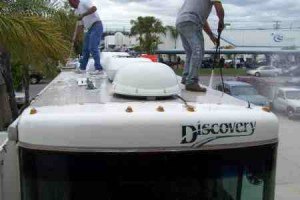Things to Avoid During Mobile RV Repair
A well-maintained recreational vehicle gives you several years of fruitful and enjoyable service. Regular inspection and maintenance works are the keys to prolonging the life of your RV. Unfortunately, the roof receives only a little attention from owners because they seldom go up to check its condition.
Long miles of travel under different weather conditions could exact a toll on the roof condition of your RV. Even if we constantly observe regular maintenance schedule, time comes when we have to make necessary mobile RV repair.
When you have to make a repair work on your RV roof, avoid committing what we listed below to make your mobile RV repair experience a pleasant and not an expensive one.
Things to Avoid
1. Use of Harsh Chemicals
Never use harsh chemicals on an EPDM rubber roof. They, along with petroleum-based and abrasive products, can damage your rubber roof. A mistake could mean replacing the entire roof.
2. Using Just About Any Roofing Material
Never use any product that is not specifically suited for RV roof use. Sellers of rubber roofs for homes may or may not carry products for RV roofs. Rubber roof membranes for RV are different from those used for homes. They are generally flexible to withstand vibrations and shaking.
3. Not Checking the Sealant Used
Most RV today use rubber roofing membrane, fiberglass and vinyl. Rubber roofs are either Ethylene Propylene Diene Monomer (EPDM) or Thermal Poly Olefin (TPO). If you are going to apply sealant on your rubber roof, use the right type of sealant for the rubber surface of your RV. Using the wrong sealant would not only cost you more money but require more work. For instance, a silicon sealant should not be applied to a rubber roof because it will peel off easily.
4. Non-Observance of the Proper Cleaning Procedure
Thoroughly clean the roof before doing any repair. Do not use cleaners that contain abrasive materials, citrus ingredients and petroleum solvent as these cleaners could cause permanent damage to vinyl and rubber surfaces. Cleaning rubber roofs is actually simple—you can use household cleaners and dishwashing liquid for normal cleaning.
5. Breaking the Manufacturer’s Warranty
Before doing any major work or repair on your roof, check with your RV manufacturer to prevent voiding the warranty in case you installed the wrong roofing material.
6. Putting Your Entire Weight on One Portion
Do not walk on your RV rubber roof without first laying plywood or other light wood materials over the seams. This way, your weight is not concentrated on the area that you step on but distributed equally across the roof rafters.
